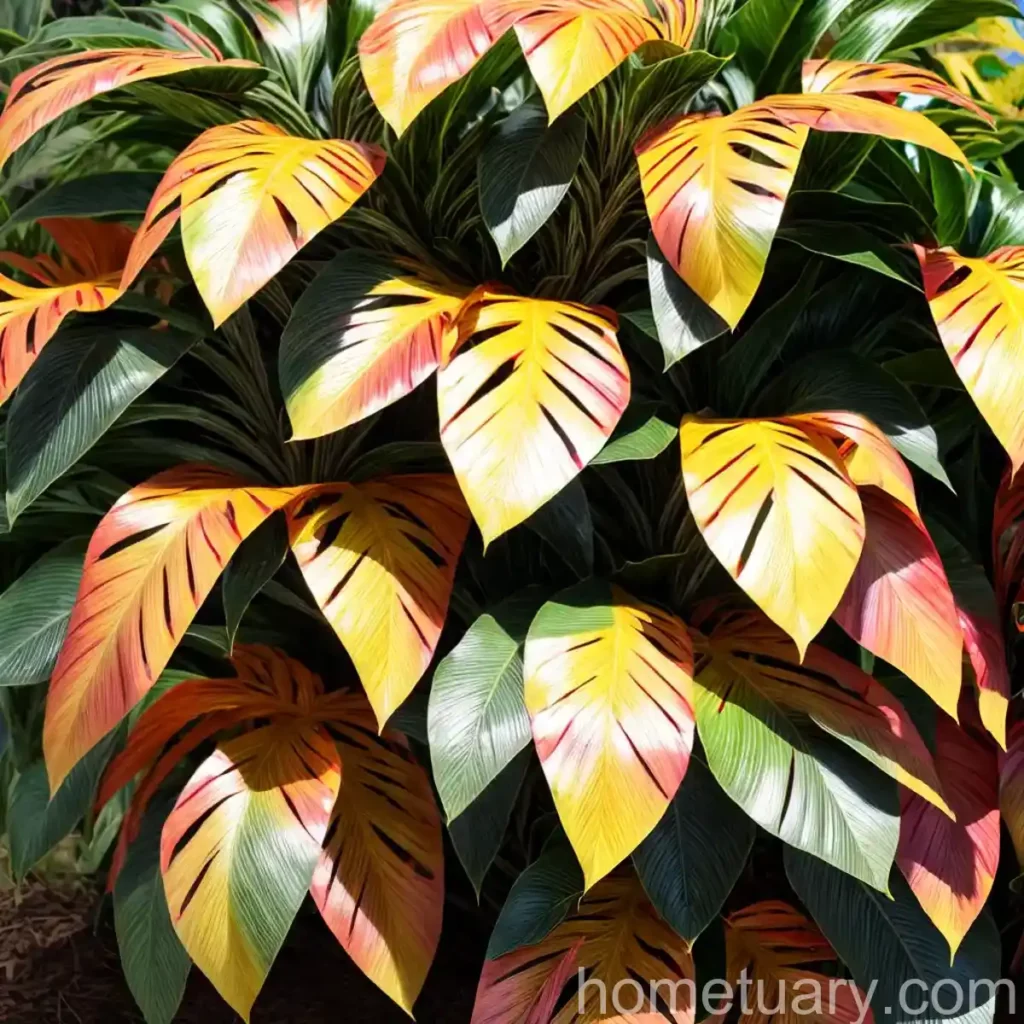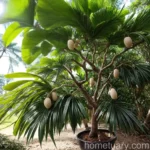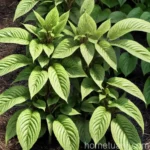The Fascinating World of Croton (Codiaeum Variegatum)
As a plant scientist with a passion for diverse plant species, I am excited to delve into the captivating world of Croton (Codiaeum variegatum). This vibrant and versatile plant has gained immense popularity among gardening enthusiasts due to its stunning foliage and ease of care. In this comprehensive guide, we will explore various aspects of Croton, including its culture, uses, care requirements, common diseases and pests, propagation techniques, and much more. Whether you’re a seasoned plant aficionado or a novice gardener, there’s a wealth of valuable information to uncover about this remarkable botanical specimen.
What is Croton (Codiaeum variegatum)?
Croton (Codiaeum variegatum) is a species of flowering plant in the spurge family, Euphorbiaceae. Native to Indonesia, Malaysia, Australia, and the western Pacific Ocean islands, Croton is renowned for its diverse leaf shapes, sizes, and vibrant colors. The plant’s variegated foliage comes in an array of striking combinations, ranging from fiery reds and oranges to rich greens and yellows, making it a visually captivating addition to any indoor or outdoor space.
Key Takeaways – Croton (Codiaeum variegatum)
Before we delve deeper into the specifics of Croton care and cultivation, let’s take a brief look at the key takeaways associated with this distinctive plant:
- Scientific Name: Codiaeum variegatum
- Common Name: Croton
- Family: Euphorbiaceae
- Native Region: Indonesia, Malaysia, Australia, and Pacific Islands
- Foliage: Variegated, colorful leaves in diverse combinations
- Uses: Ornamental purposes, indoor and outdoor landscaping
Now let’s embark on an exploration of various facets of Croton, from its cultural requirements to common diseases and pests that may affect its health.
Culture
Understanding the cultural requirements of Croton is essential for ensuring its optimal growth and development. From sunlight and water to soil and fertilizer, let’s delve into the various aspects of Croton culture.
Uses
Croton (Codiaeum variegatum) is primarily cultivated for its ornamental foliage, making it a popular choice for both indoor and outdoor landscaping. The plant’s vibrant and variegated leaves add a touch of exotic beauty to gardens, patios, and interior spaces. Additionally, Croton is often used as a decorative accent in floral arrangements and bouquets, adding a splash of color and texture.
Water
Proper watering is crucial for the health and vitality of Croton plants. While it’s important to maintain adequate soil moisture, it’s equally essential to avoid overwatering, which can lead to root rot and other moisture-related issues. As a general guideline, water your Croton when the top inch of the soil feels dry to the touch. During the growing season, typically spring and summer, you may need to water more frequently, ensuring that the soil remains consistently moist but not waterlogged. In contrast, reduce watering during the plant’s dormant period in the fall and winter, allowing the soil to partially dry out between waterings.
Sunlight
Croton plants thrive in bright, indirect light, making them well-suited for placement near windows or in well-lit interior spaces. While Croton requires ample sunlight to maintain its vibrant leaf colors, it’s important to protect the plant from direct, intense sunlight, which can scorch its delicate foliage. Providing filtered light or partial shade is ideal for ensuring the health and longevity of your Croton plant.
Fertilizer
Fertilizing Croton plants is integral to supporting their vigorous growth and vibrant foliage. During the active growing season, apply a balanced, water-soluble fertilizer formulated for tropical plants every four to six weeks. However, it’s important to dilute the fertilizer to half or one-quarter strength to prevent over-fertilization, which can cause leaf burn and other complications. As the plant enters its dormant phase in the fall and winter, reduce or cease fertilization until the following growing season.
Soil
Well-draining, nutrient-rich soil is essential for the health and flourishing of Croton plants. A high-quality potting mix designed for tropical plants, enriched with organic matter, provides the ideal growing medium for Croton. This specialized potting mix ensures adequate aeration and moisture retention while delivering essential nutrients for the plant’s growth. Furthermore, maintaining slightly acidic to neutral soil pH (around 6.0 to 6.5) supports optimal nutrient uptake and overall plant health.
Pruning
Pruning is an essential aspect of Croton care, contributing to the plant’s aesthetic appeal, overall health, and vigor. Regular pruning helps maintain the desired shape and size of the plant while removing any dead, damaged, or diseased foliage. When pruning Croton, it’s important to use sharp, sterile pruning shears to make clean cuts, minimizing the risk of introducing pathogens. Additionally, wearing gloves is advisable to protect your skin from the plant’s toxic sap, which can cause irritation.
Propagation
Propagating Croton plants allows for the expansion of your greenery collection or the sharing of these exquisite plants with fellow gardening enthusiasts. While Croton can be propagated from seeds, the most common methods of propagation include stem cuttings and air layering. Using a combination of well-prepared planting medium, optimal humidity levels, and gentle care, you can successfully propagate Croton and witness the growth of new, vibrant plants.
Container Popularity
The compact size and striking foliage of Croton make it an ideal choice for container gardening. Whether adorning patios, balconies, or interior spaces, Croton’s colorful presence brings an element of tropical allure to any setting. When selecting a container for your Croton, ensure that it provides adequate drainage and sufficient space for the plant’s root system to thrive. Additionally, consider the aesthetic appeal of the container, choosing a design and color that complement the vibrant foliage of the Croton plant.
Common Diseases
Despite its resilience, Croton (Codiaeum variegatum) is susceptible to certain diseases that can affect its overall health and appearance. Understanding the common diseases and their potential impact is crucial for implementing effective prevention and management strategies.
Disease Diagnosis
- Leaf Spot: Leaf spot diseases, caused by various fungal pathogens, may manifest as dark, water-soaked lesions on the plant’s foliage. As the disease progresses, the lesions may develop distinctive rings or spots, leading to leaf yellowing and premature defoliation. Proper air circulation, moderate watering, and avoiding overhead watering can help prevent the development and spread of leaf spot diseases.
- Powdery Mildew: Powdery mildew, characterized by white or gray powdery patches on the upper surface of leaves, stems, and other plant parts, can weaken the Croton plant and detract from its visual appeal. To mitigate powdery mildew, maintain adequate spacing between plants to facilitate air circulation, and avoid overcrowding in growing areas. Additionally, ensure proper ventilation and moderate humidity levels to discourage powdery mildew development.
Common Pests
In addition to diseases, Croton plants may fall prey to various pests that can compromise their health and vitality. Vigilance and prompt intervention are essential for managing common pests and minimizing their impact on Croton plants.
Pest Prevention
- Spider Mites: These tiny arachnids can infest Croton plants, causing stippled, discolored foliage and webbing on the undersides of leaves. To prevent spider mite infestations, maintain adequate humidity levels, as dry conditions can exacerbate their proliferation. Periodically misting the plant’s foliage and gently wiping the leaves with a damp cloth can help deter spider mites.
- Mealybugs: Mealybugs, characterized by their cottony, waxy appearance, can cluster on Croton plants, feeding on sap and potentially causing stunted growth. Regularly inspect your Croton for signs of mealybug infestations and employ natural or organic control methods, such as insecticidal soap or neem oil, to combat these persistent pests.
Botanist’s Tips
As a seasoned botanist with a deep appreciation for the captivating allure of Croton plants, I offer the following tips to enhance your cultivation and care of this remarkable botanical specimen:
- Regularly inspect your Croton plant for signs of pests, diseases, or environmental stress, addressing any issues promptly to prevent escalation.
- Avoid overwatering your Croton, as excessive moisture can lead to root rot and other moisture-related complications. Allow the soil to partially dry out between waterings, particularly during the plant’s dormancy.
- When pruning your Croton, exercise caution and use sharp, sterile pruning tools to ensure clean cuts and minimize the risk of introducing pathogens.
Fun Facts
Did You Know?
- The vibrant leaf colors and patterns of Croton plants are a result of pigment variations, including the presence of chlorophyll, carotenoids, and anthocyanins, which contribute to the plant’s stunning visual display.
- Croton plants are renowned for their air-purifying qualities, effectively removing common indoor pollutants and enhancing air quality in interior spaces.
- The name “Croton” is derived from the Greek word “kroton,” which refers to a tick, possibly alluding to the plant’s seeds’ resemblance to the blood-sucking arachnids.
Links to External Resources
For further exploration of Croton (Codiaeum variegatum) care, cultivation, and horticultural significance, consider visiting the following authoritative resources:
- The Spruce – Croton Plant Profile and Growing Guide
- University of Florida IFAS Extension – Codiaeum variegatum
- Missouri Botanical Garden – Codiaeum variegatum
- Royal Horticultural Society – Croton (Codiaeum variegatum) Care
In conclusion, Croton (Codiaeum variegatum) stands as a captivating testament to nature’s boundless creativity, showcasing an exquisite tapestry of leaf colors, patterns, and forms. Through attentive care, appreciation for its ornamental value, and a deep understanding of its cultural requirements, the allure of Croton plants can flourish, gracing our living spaces with their tropical splendor. Whether you’re captivated by the plant’s vibrant foliage, its air-purifying qualities, or its resilience in various growing conditions, there’s much to admire and explore within the enchanting world of Croton.
As aspiring and seasoned horticulturists alike, may our journey with Croton plants be one of curiosity, care, and boundless appreciation for the botanical beauty that enriches our lives.
In this extensive guide, I have covered various aspects of Croton (Codiaeum variegatum) care, cultivation, and botanical significance, culminating in a comprehensive resource for plant enthusiasts, gardeners, and horticultural aficionados. Whether you’re seeking insights into the plant’s cultural requirements, pest and disease management, or its decorative uses, this guide serves as a valuable companion in your exploration of the captivating world of Croton.















